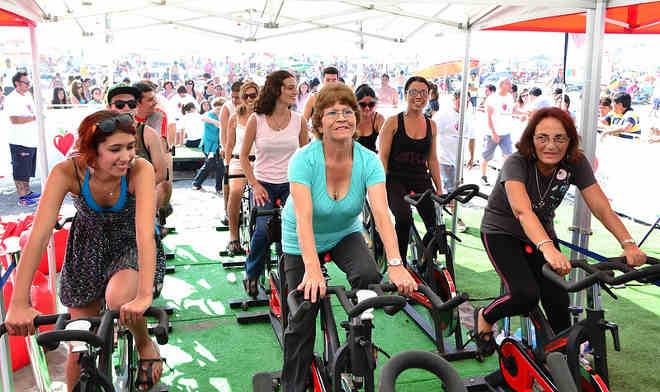The installation of exercise equipment in public squares is just one of the innovative strategies used in the Chilean government’s new initiative to reduce soaring rates of obesity. “We are not asking people to join a program at a gym,” Director of Elige Vivir Sano (Choose Healthy Living), Pauline Kantor, tells the Inter Press Service, “…they can work out at home or in nearby squares.”
Chile has the third highest rate of obesity in South America, according the World Health Organization (WHO). While the Revista Chilena de Nutrición (Chilean Journal of Nutrition) reports that malnutrition among children decreased from 37 percent to only 2.9 percent from 1960 to 2000, the Ministry of Health reports that 22.4 percent of children are currently overweight, and 25 percent of adults are considered obese.
A sedentary lifestyle is partially to blame. Director Kantor tells IPS that more than 80 percent of the population exercises for less than one hour per week. With the average Chilean eating six to eight servings of bread daily, Dr. Juan Carlos Prieto, a cardiologist at the Clinical Hospital of the University of Chile, tells IPS this food staple is also the “nub of the problem.”
More than personal habits, inequality may be at the root of Chile’s obesity epidemic. Despite drastic decreases in poverty and malnutrition, a publication by the International Food Policy Research Institute (IFPRI) reports that disparities in income and health remain stark. With minimum wage for one family at US$400 a month, IPS reports that 35.5 percent of Chileans in the lowest socioeconomic sector is overweight, compared to 18.5 percent of the highest socioeconomic sector. According to Chile’s 2004 National Population Health Survey, the prevalence of obesity is twice as high among Chileans with lower education levels as compared to those with a high level of education.
The growing prices of fresh foods force many families to choose affordable breads and pastas over more nutritious fruits and vegetables. “A kilo of apples used to cost 20 cents in street markets,” reports IPS, “and now costs $1.50. In supermarkets, the price is even higher.”
Elected in 2010, President Sebastián Piñera has implemented Elige Vivir Sano, a national plan to reduce obesity among all Chileans. The program is in collaboration with the Ministries of Education, Health and Agriculture as well as the National Institute of Sports and various private companies.
Part of the president’s plan focuses on youth, by increasing physical education in schools and referring overweight children to nutritionists. President Piñera’s plan also includes the innovative creation of “Activity Plazas” now in 172 out of 326 municipalities, according to IPS.
Additionally, radio and TV ads educate the public about ways to maintain a healthy lifestyle on any budget, such as demonstrating how to exercise at home with bags of rice or beans as weights.
Forty percent of people in contact with the Elige Vivir Sano program reported that they changed at least one unhealthy habit. However, some people, like Dr. Prieto, are wary that the program needs to address the underlying inequalities at the root of the obesity epidemic.
Beyond increasing physical education in schools, the IFPRI report suggests the Chilean government focus on important factors such as equalizing access to education in order to close income gaps. Until Chileans have the means to “Choose Healthy Living,” the price of bread could remain the deciding factor.











